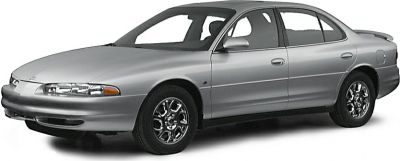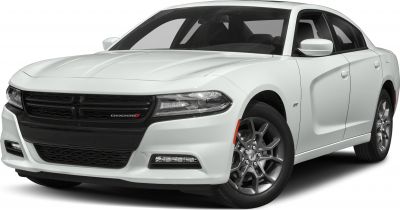 2000 Ford Taurus IV Dimensions, Size & Specs
2000 Ford Taurus IV Dimensions, Size & SpecsMeasurements of the 2000 Ford Taurus IV, engineered for optimal performance and comfort
| Dimensions | |
|---|---|
| Length: | 5019 mm197.6 in16.5 ft |
| Width: | 1854 mm73.0 in6.1 ft |
| Height: | 1425 mm56.1 in4.7 ft |
| Trunk Capacity: | 481 liter17.0 cu ft |
| Weight Specifications | |
| Curb Weight: | 1503-1530 kg3314-3373 lbs |
| Tire Specifications | |
| Rims Size: |
|
| Tire Size: |
|
The Ford Taurus IV, produced from 2000 to 2007, is a full-size sedan that marked a continued evolution of the Taurus lineup, delivering a blend of comfort, space, and style. Measuring 5019 mm (197.5 inches) in length, 1854 mm (73.0 inches) in width, and standing at 1425 mm (56.1 inches) tall, this generation offered a spacious cabin ideal for families and daily commuting. The sedan's substantial length contributes to generous interior legroom and a smooth ride characteristic of Ford’s design ethos during this period.
Weighing between 1503 and 1530 kilograms (3315 to 3372 pounds), the Taurus IV balances solid construction with efficient performance. Its curb weight supports stability and handling while maintaining fuel economy appropriate for a full-size sedan of its era. The car rides on 16-inch rims paired with 215/60 R16 tires, providing a comfortable and controlled driving experience suitable for various road conditions.
Inside, the vehicle offers a luggage capacity of 481 liters (approximately 17 cubic feet), which is competitive in its class, allowing ample space for luggage or groceries. Such capacity ensures practicality for users needing both passenger comfort and cargo versatility.
Overall, the Ford Taurus IV stands out as a reliable choice within the full-size sedan segment during the early 2000s, with dimensions and features making it a solid option for those prioritizing interior space, moderate weight, and a balanced ride quality.
Discover the standout features that make the 2000 Ford Taurus IV a leader in its class
Have a question? Please check our knowledgebase first.
The Ford Taurus IV sedan produced from 2000 to 2007 has an exterior length of 5019 mm (197.5 inches), a width of 1854 mm (73.0 inches), and a height of 1425 mm (56.1 inches). These dimensions contribute to its classification as a full-size sedan, offering a spacious exterior footprint that balances interior roominess with manageable city driving. The length gives the Taurus IV a commanding presence on the road, while the width provides stability and ample interior shoulder space for passengers. Its height of 1425 mm is typical for sedans of this class, contributing to a lower center of gravity for improved handling.
The curb weight of the Ford Taurus IV ranges from 1503 to 1530 kg (3314 to 3372 pounds). This relatively moderate weight is influenced by factors such as engine choice, drivetrain configuration, and optional equipment. For instance, trims with larger engines or additional luxury features like advanced audio systems, safety components, or heavier wheels may push the weight toward the higher end of the range. The vehicle's body construction uses steel and some lightweight materials optimized to provide a sturdy yet efficient platform. The curb weight impacts fuel efficiency, acceleration, and handling dynamics, and the Taurus IV strikes a balance between solid build quality and performance.
The Ford Taurus IV offers a luggage capacity of 481 liters (approximately 17 cubic feet), which places it favorably among full-size sedans of its era. This trunk volume allows owners to comfortably pack suitcases, shopping bags, and other cargo required for daily needs or longer trips. Compared to competitors, the Taurus IV's trunk space is competitive, often matching or exceeding similar models from rival brands. Additionally, rear seats typically fold down to expand cargo space in some trim configurations, enhancing versatility. This generous capacity makes the Taurus IV practical for families and individuals who prioritize cargo room.
The Ford Taurus IV comes equipped with 16-inch rims paired with tire sizes of 215/60 R16. The 215 mm tire width strikes a balance between comfort and grip, providing sufficient contact with the road for a smooth ride and reliable handling characteristics. The 60% sidewall height (aspect ratio) adds to the cushioning effect, reducing impacts from road irregularities for enhanced ride comfort. The 16-inch rim diameter is common for sedans in this segment, offering a blend between stylish appearance and functional performance. Overall, this setup ensures the Taurus IV delivers a comfortable driving experience with competent handling.
Yes, the Ford Taurus IV fits comfortably into a standard residential garage. With a length of 5019 mm (197.5 inches) and width of 1854 mm (73.0 inches), it is within the dimensions accommodated by most typical single-car garages, which usually measure about 6 meters (20 feet) in length and 3 meters (10 feet) in width. The vehicle’s height of 1425 mm (56.1 inches) also poses no clearance issues for standard garage doors, which generally offer heights well above 2 meters (6.5 feet). Thus, owners should have no difficulty parking their Taurus IV in common home garages without concerns about space.
Compared to its predecessor, the Ford Taurus III, the Taurus IV introduced between 2000 and 2007 offers a slightly larger overall footprint which translates to more interior space and enhanced passenger comfort. Notably, the increased length and width allow for improved legroom and shoulder room for both front and rear passengers. The redesign also focused on improving ergonomics, seating materials, and cabin noise insulation, resulting in a quieter and more comfortable environment. The Taurus IV’s interior is often regarded as more modern and user-friendly, with updated features and controls which better mimic luxury sedans, elevating the overall driving and riding experience when compared to the previous generation.
When compared to other full-size sedans from the early 2000s, such as the Chevrolet Impala, Toyota Avalon, or Dodge Intrepid, the Ford Taurus IV holds its own in terms of overall dimensions and interior space. With a length of 5019 mm (197.5 inches), it tends to be slightly longer than some competitors, which often range between 4900 to 5000 mm in length. Its width of 1854 mm (73.0 inches) places it squarely in the middle of the pack, offering comparable shoulder room. The luggage capacity of 481 liters (17 cubic feet) is also competitive, often exceeding what some rivals offer. This made the Taurus IV a strong contender for buyers seeking space, comfort, and practicality.
The Ford Taurus IV is designed to comfortably seat five passengers across two rows: two in the front and three in the rear. The cabin dimensions enable decent legroom and headroom for occupants while the vehicle's width of 1854 mm (73.0 inches) supports comfortable shoulder space, especially in the front. The rear bench typically accommodates three adults, though taller passengers may find long journeys less spacious than the front. The seats are generally cushioned and supportive, particularly in higher trim levels, and the rear seatback often folds down to expand trunk space, adding versatility for cargo carrying when fewer passengers are present.
With a height of 1425 mm (56.1 inches), the Ford Taurus IV has a relatively low and sleek profile that contributes to its stable handling characteristics and reduced aerodynamic drag. While specific ground clearance figures vary slightly depending on trim and suspension setup, the sedan's design provides sufficient clearance for paved roads and light urban driving conditions but is not intended for rough or off-road terrain. Its moderate ride height helps maintain a lower center of gravity, improving cornering stability and ride quality. This balance gives drivers confidence in everyday driving scenarios while offering comfortable ingress and egress for passengers.
Yes, the Ford Taurus IV brought refinements in suspension and chassis design compared to its predecessor, aimed at enhancing ride comfort, handling, and overall driving dynamics. While the basic architecture remained similar, engineers optimized suspension tuning to better isolate road imperfections and reduce noise, vibration, and harshness (NVH) levels. The front typically featured independent strut suspension, and the rear employed multi-link setups, which improved control and stability. These tweaks resulted in a sedan that felt more poised at highway speeds and more composed in cornering, offering a more refined driving experience without sacrificing comfort for everyday usage.
Discover similar sized cars.

| Production: | 1998-2002 |
|---|---|
| Model Year: | 1998 |
| Length: | 4975 mm195.9 in |
| Width: | 1870 mm73.6 in |
| Height: | 1440 mm56.7 in |

| Production: | 2020-present |
|---|---|
| Model Year: | 2020 |
| Length: | 4978 mm196.0 in |
| Width: | 2126 mm83.7 in |
| Height: | 1466 mm57.7 in |

| Production: | 2005-2008 |
|---|---|
| Model Year: | 2005 |
| Length: | 5030-5170 mm198.0-203.5 in |
| Width: | 1900 mm74.8 in |
| Height: | 1480 mm58.3 in |

| Production: | 2020-present |
|---|---|
| Model Year: | 2020 |
| Length: | 4978 mm196.0 in |
| Width: | 2126 mm83.7 in |
| Height: | 1466 mm57.7 in |

| Production: | 2019-2021 |
|---|---|
| Model Year: | 2019 |
| Length: | 4996 mm196.7 in |
| Width: | 1869 mm73.6 in |
| Height: | 1471 mm57.9 in |

| Production: | 2019-present |
|---|---|
| Model Year: | 2019 |
| Length: | 4995 mm196.7 in |
| Width: | 1870 mm73.6 in |
| Height: | 1470 mm57.9 in |

| Production: | 2015-2019 |
|---|---|
| Model Year: | 2015 |
| Length: | 5040-5100 mm198.4-200.8 in |
| Width: | 1905 mm75.0 in |
| Height: | 1480 mm58.3 in |

| Production: | 2000-2003 |
|---|---|
| Model Year: | 2001 |
| Length: | 4995 mm196.7 in |
| Width: | 1830 mm72.0 in |
| Height: | 1470 mm57.9 in |
